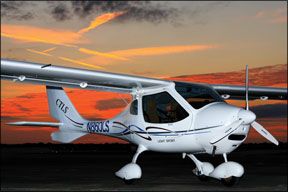A brief query to the WABAC machine unearthed this gem on light sport aircraft from the Aviation Consumer archive: “Some think the combination of lighter, cheaper airframes and simpler pilot certification will yield a boom in private flying.” We think its reasonable to say that almost everyone thought this, but if you now think the boom sounds more like a faint squeak, you arent alone. The LSA groundswell has yet to form and judging by comments from our readers and video viewers, the cost of the airplanes has something to do with it. Maybe a lot to do with it. “Why are LSAs so $%#@*! expensive,” wrote one reader, after we reviewed the American Legend Cub on amphib floats (retail: $159,000) for our April 2010 issue. Its a fair question and one thats not too difficult to answer with two observations: One, they arent that expensive when compared to larger certified aircraft and, two, although the industry never said as much, the notion of the $40,000 LSA somehow became embedded in the consciousness of some buyers and continues to form the cost/value perception for many would-be LSA customers. To this, we would add a third market reality: The top five LSA sellers-Flight Design, American Legend, Tecnam, Remos and CubCrafters are not down-market offerings. Typical prices are north of $125,000 and some are we’ll above that. This proves what aircraft manufacturers and BMW dealers have known for years: the cheap seats arent big sellers.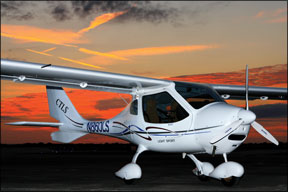
the State of Play
In phoning sources in the industry, we conclude that no one really had a sense of how fast the LSA market would grow, which may be a good thing, given that it hasnt exactly exploded. On the other hand, it hasnt done so badly, either, especially in the context of a terrible economy.
As of March 2010, about 1750 LSAs have been sold in the U.S., basically since about 2005 when the LSA rule was finalized. During the same period, U.S. manufacturers delivered about 10,700 piston aircraft, so LSA represents about 17 percent of additional market for piston GA. That may not be revolutionary, but its more than credible, in our view. On the pilot certification side, market penetration is less impressive. About 2000 sport pilot certificates have been issued, according to the FAA, a little over 3 percent of the 580,000 U.S. airman file.
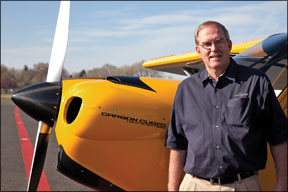
Whats not obvious from those numbers is the impact LSA has had on retaining older pilots. Many so-called “full-circle” pilots are selling their standard category airplanes and getting into LSA flying as a hedge against losing their medicals. These pilots tend to be affluent and can afford to buy LSAs priced at $100,000 or more. But the savvy players in the industry realize they represent a bubble, not a sustainable market.
“We see a continuing number of older pilots worrying about their medicals and buying LSAs as a result,” says Tecnam North Americas Phil Solomon. “But thats not where the explosive growth will be. It will come from getting airplanes back into airports where there arent any now.”
Is Price The Thing?
Tecnams angle on this is somewhat unique, since its pushing hard to broaden LSA into the training market to build the next new wave of pilots. But to succeed, wont we need a fleet of $40,000 LSAs to make it all affordable?
“There’s an answer to that,” Solomon adds. “Its called an ultralight.” Of course, mainstream training of LSA pilots in ultralights is a non-starter, but true LSAs are gaining traction in the training market, high perceived costs or not. Solomon says potential buyers are doing what they always do: fixating on purchase costs instead of operating costs and margins. He argues that an owner or flight school with a newish Cessna 172 for training can expect the airplane to bill for at least $130 per hour wet, with maybe $16 finally going to the owner after expenses. A new LSA, on the other hand, can bill at $120 an hour and deliver more than double the margin back to the owner. Profit for the owner or flight school, says Solomon, is more fundamental to getting airplanes back into the system (and into moribund airports) than actual purchase price.
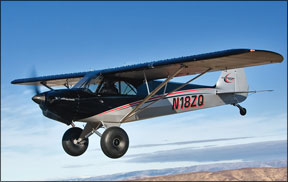
But an owner on the market for his own LSA wont buy that. Hell look at the tall price tag and make a snap judgment on price/value. But where does that price signal come from? Are the perceptions just wrong?
Who Said Cheap?
“I don’t know who told the public that light sport airplanes were going to be cheap, although I know that happened,” says Jim Richmond of CubCrafters. His company unapologetically plies the upper end of the market with designs like the hot-rod Carbon Cub SS typically selling for $180,000 and nearer to $200,000 if tricked out to the max. Despite upper tier pricing, CubCrafters remains in the top five of companies selling LSAs in a hyper competitive market.
Then again, cheap is relative. EAAs Earl Lawrence, who was intimately involved in the early development of LSA rules and the ASTM International standard that governs their manufacture, argues that the industry has delivered on inexpensive airplanes.
“Really, the LSA rule cut costs in half,” says Lawrence, noting that a new basic Cessna 172 costs $270,000 and a new Skycatcher-and a number of comparable LSAs-are half that. The point, he argues, is access to the activity of flying on an affordable basis, not how fast the airplane will go or how much it will carry for how many dollars.
We heard this several times: What some legacy buyers don’t get is that LSA was and is intended to prop up the market with an affordable buy-in of new products, not blazing performance. It was, and is, more about access, less about practical travel.
And that explains in part why the industry pushed back against expanding the 1320-pound weight limit to include more legacy designs. “We specifically excluded some of the heavier legacy
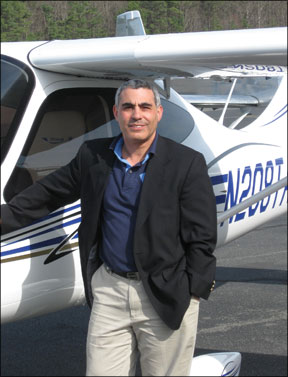
airplanes because we wanted to encourage the development of new airplanes and new products,” Lawrence told us. And anyway, he adds, new LSAs will become used aircraft soon enough and will thus become affordable for owners who don’t want or cant afford a $100,000-plus LSA.
Yet to be seen is how fast used LSA prices tumble. While older pilots buying into both new and LSA-compliant legacy airframes are an above-ground trend, were not sure the trend is well-established enough to prop up prices much. Some legacy aircraft such as the Aeronca Champion, the Ercoupe and Taylorcraft remain good buys.
Price Pressure
So why arent we seeing the $40,000 or $60,000 LSA? Actually, we are. Long-time kit maker RANS offers the S-6 LSA in this price range. But American Legend has sold five times as many airplanes at twice the price, further reinforcing the notion that buyers respond more to top-tier pricing than theyll admit to.
To understand why most LSAs are above $90,000 and some are a lot above that, you have only to examine Cessnas experience with the Skycatcher. The companys Bob Stangarone told us that when it entered the market, Cessna did what it always does: intense, detailed market research. Whether LSA or certified, we doubt if anyone has as good a grasp of market realities for piston airplanes as Cessna does.
Based on that work, Stangarone said, Cessnas goal for the Skycatcher was $100,000. “Price has always been a key objective for us. We knew the market would be there if the price was right,” he says. Cessna didnt quite make the price goal, given that the Skycatcher base price is $112,250, but the typically equipped model will sell for about $120,000.
Cessnas experience tests the notion that the market self-limits above $100,000. As we go to press in early April 2010, Cessna has more than 1000 firm orders for the Skycatcher, which itself represents nearly 40 percent of the current market.
Stangarone is blunt about the price point. “We got into LSA to encourage new pilot starts and to feed Cessna brand loyalty,” he says. “But we told our parent, Textron, that the airplane would be profitable.” And to fulfill that promise, Cessna took Skycatcher manufacturing to China, the only company in the LSA segment to do so. (Seven of the top 10 LSA sellers in the
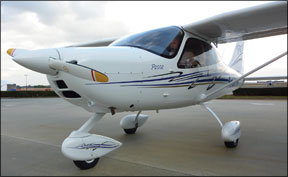
U.S. are manufactured offshore, some in Eastern Europe and the former Soviet bloc, where there’s plenty of manufacturing capacity and downward pressure on costs and wages.)
That turns out to be a mixed blessing, however, as Tom Peghiny of Flight Design USA pointed out. With its German-designed CTLS series, Flight Design has more than 300 airframes flying in the U.S., the single largest market share. But it has been absolutely hammered by currency exchange rates.
When Flight Design first introduced the original CT2K, the no-options price was $65,000 at a time when the Euro was at parity with the dollar. Eight years later, the Euro has been as high as 1.6 to the dollar and now hovers around 1.4. Further, stripped down steam-gauge airplanes are pass-glass is the thing.
As a result, Flight Design prices have more than doubled in six years. At the Sebring U.S. Sport Aviation Expo, Flight Design introduced a new version of the CTLS with Dynons new synthetic vision Skyview. Price: $159,000. Thats nearly two-and-a-half times the original asking price, but its also a far more sophisticated airplane.
With the exchange rate working in their favor, youd think that U.S. manufacturers would have a competitive advantage in selling in Europe. That isn’t the case, unfortunately. The European Union has yet to approve U.S.-equivalent LSA rules so, for the moment, LSA activity is a one-way street running out of Europe into the U.S., the strong Euro notwithstanding.
Another price pressure point for U.S. manufacturers is competitive labor rates, Despite a slow economy, it costs more to build an airplane in the U.S. than elsewhere and the lower the selling price, the less the margin. Airplanes from CubCrafters and American Legend are still largely hand built, although some automation can be applied.
“The people with those skills can work for Boeing or they can work for CubCrafters. Either way, its going to cost the same to pay them,” says CubCrafters Jim Richmond.
Like every other company, CubCrafters has tried to sharpen the pencil and build an airplane to sell for under $100,000. American Legend will be trying that again this year. But there are two problems with this: One, the margins on these airplanes are razor thin and, two, they havent proven to sell any better and may sell a little worse than more expensive airplanes. Richmond told us CubCrafters sub-$100,000 airplane project was short-lived. “We tried. But it became apparent to me and I told the staff that we were committing suicide at that price,” Richmond says.
Sustainability
Richmonds comment frames a daunting challenge for those trying to make it in the LSA market and that is getting the price/volume/margin relationship right. This isn’t necessarily
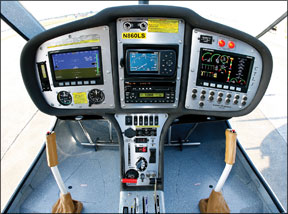
easy to do on large-volume manufactured products like cars and computers. Its orders of magnitude more difficult in airplane making where regulation, harsh market vagaries and where small volume magnifies unit cost variables.
In manufacturing, it is often assumed that if the price is lowered enough, the market hits an inflection point and both sales and profits increase thanks to the magic of economy of scale. Call it one finger on the invisible hand.
But if this works in the thousands and hundreds of thousands of units, it clearly doesnt help much in the hundreds (or less) of units that apply to the world of LSA.
“Were not seeing that kind of behavior in this market,” says Earl Lawrence. “You don’t sell any more aircraft at $60,000 than at $120,000. That wouldnt indicate a market break,” he says. With more than a thousand airplanes in the order book, Cessna would be the test case for this, obviously.
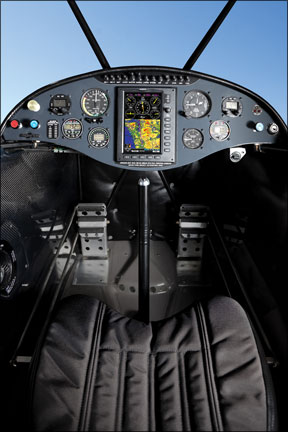
“We know that some people think LSA prices ought to be $60,000 or $70,000. Thats an unrealistic expectation. We never thought we could hold prices that low,” says Bob Stangarone. And Cessna has something none of the other LSA makers do: A well-established support network into which the Skycatcher can seamlessly flow. The other manufacturers have to rely on either a thinner dealer support network or factory direct support. Either way, the prices have to have enough margin to pay for that support and, based on our research, current LSA prices barely do that.
Conclusion: We think there will always be a handful of sub-$100,000 new LSAs, but these will be the most basic airframes and anyone making them will either have to have other more profitable products in their line or a trust fund to pay the phone bill and keep the lights on in the parts department.
Adding up the component costs of a well-equipped LSA, its difficult to see how one can be sold for under about $120,000. We predict that for the short-term, the median price for new LSAs will remain in the mid-$120,000 to $135,000 range for those companies that hope to survive. As much as we wish it were lower, to expect this is simply delusional.

